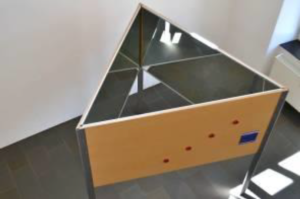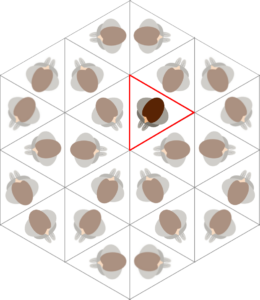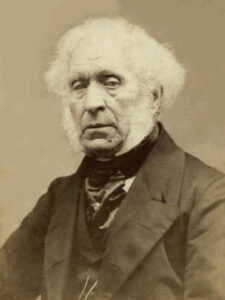Giant Kaleidoscope
Tasks
|
||||||
MathsThe first mirror creates a reflection, the second mirror creates reflections-of-reflection, and the third mirror creates infinitely many reflections. When the mirrors are placed at 60˚ they create hexagonal patterns. We are used to seeing ourselves reflected in a mirror, but some of your reflections here may look strange. That’s because half of the images are reflections, and half of the images are reflections-of-reflections, which create a rotation. |
||||||
HistoryRotations and reflections have been studied for thousands of years. However, the kaleidoscope was invented in 1817 by Scottish scientist Sir David Brewster. Brewster discovered the beautiful patterns while investigating light polarisation, and spent some time perfecting the kaleidoscope to make beautiful patterns, including adding coloured beads, and to place the three mirrors in a tube with a lens at the end. Soon, the kaleidoscope became a sensation, selling an estimated two hundred thousand kaleidoscopes in London and Paris in just three months. |
||||||
People |
||||||
ApplicationsMirrors and lenses are used in a variety of scientific instruments and everyday objects. These include telescopes, microscopes, cameras and fibre optic cables. These instruments magnify images or transmit light through a series of reflections. |
||||||
Maths at HomeMake a kaleidoscope at home with these instructions. |




